#Automobile Engine Valve
Explore tagged Tumblr posts
Text
Liquid Nitriding – A Versatile Surface Treatment Solution by BLW Engine Valves
Liquid nitriding, also known as L.C.N, Oxy-nitrocarburizing, Sursulf, Isonite, Pulsonite, Arcur, Teniffer, Oxynite, Nopo, Tuff-Riding, and Nitrocarburizing, is a top alternative to chrome, especially in rod form. After establishing our new plant in the Indian and overseas markets for BLW Engine Valves and automobile parts, we have become the go-to choice for surface treatment services as a tier 2 vendor. Our advanced Nopo nitriding process significantly enhances corrosion resistance, clearing salt spray tests for up to 200 hours, ensuring superior quality and performance in demanding environments.
#bajaj automobile spare parts#bajaj auto spare parts#bajaj auto parts#bajaj parts#engine valve#valve guides#bajaj genuine parts#bajaj 3 wheeler#tvs original spare parts#automotive spare parts manufacturer
0 notes
Text
Difference Between Four Valves and Two Valves in Engine
In this blog, we shares details on the difference between four valves and two valves in engine and their advantages. And Benefits of Two Valve Engine, Benefits of Four Valve Engine. Doctor Garage offers affordable bike services at affordable prices. Checkout the blog to learn more!

#difference between four valves and two valves#bike service#automobile franchise#Benefits of Four Valve Engine#Benefits of Two Valve Engine
0 notes
Text
So much of our day is spent on time-wasting activities. You know it, and I know it. If I could have back all the time that I have used up, trying to find the tool that I just had in my hand, I would probably be able to have finished another couple of crappy cars by now. There's a whole cottage industry of variously-good-willed folks trying to tell you how to get this time back, but not a single one of them has a solution for the biggest waste of time of all: sitting in traffic.
That's right, traffic. We all hate it. Even fancy-dan city folks with functioning public transit still have to wait behind some dipshit clogging the escalator, or for the next train. It seems like we're always trying to get somewhere at the same time as everyone else, even if we've opted out of the rat race through a series of elaborate financial scams whose profits are funnelled through a Cayman Islands corporation.
I've tried a lot of solutions. Buying a four-by-four truck and just driving over curbs and through red lights when they oppose me. Buying a used firetruck, and cranking up the siren when I am getting bored of being in gridlock. Buying a little kei truck from Japan and sneaking into the gaps between lanes like Bangkok pizza deliveryfolx. Hell, I've probably even tried other ideas that don't involve a truck at all; that's how desperate things are getting around here.
For now, though, I'm learning to live with it. I realized, when I saw everyone else waiting at the stop light on their smartphones, that I could be using this time more productively. Don't take me for one of those one-eyed-touch-rectangle-fondlers, though. What I do is much simpler. My '79 Monte Carlo has a real big backseat, easily big enough for a baby bathtub or two. I pulled that seat right out, welded in a couple chunks of rebar, and I now have an engine stand ready whenever I want it. Will this light ever turn green? Don't care, because I can simply turn around in my bench seat and spend the time adjusting valves on this super-high-mileage propane Slant Six that I pulled out of the junkyard.
My cars have never been in better shape, and there's a bonus, too. Although it seriously irritates law enforcement to admit it, I am technically still "operating an automobile with my full attention" and cannot be considered to be driving distracted. Now if only I could stop dropping the inch-pound torque wrench when I'm merging onto the highway. This must be why all those fancy Japanese bullet trains have glass in their windows.
366 notes
·
View notes
Text
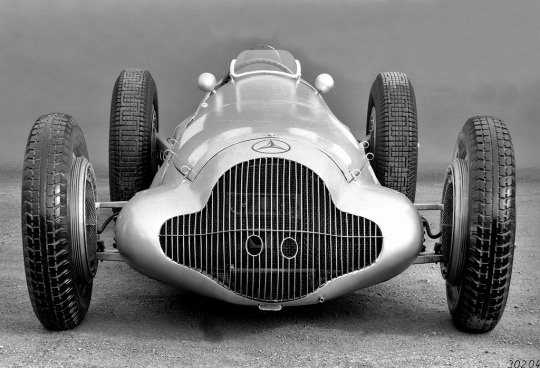

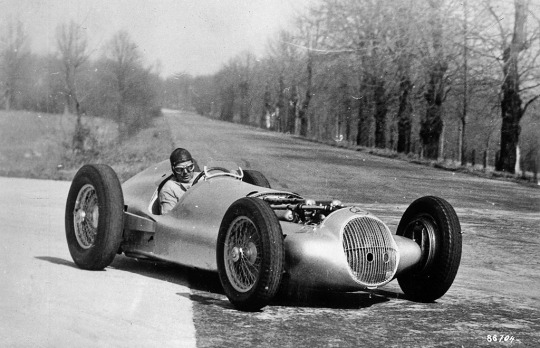
1938 Mercedes-Benz W154
In September 1936, the AIACR (Association Internationale des Automobile Clubs Reconnus), the governing body of motor racing, set the new Grand Prix regulations effective from 1938. Key stipulations included a maximum engine displacement of three liters for supercharged engines and 4.5 liters for naturally aspirated engines, with a minimum car weight ranging from 400 to 850 kilograms, depending on engine size.
By the end of the 1937 season, Mercedes-Benz engineers were already hard at work developing the new W154, exploring various ideas, including a naturally aspirated engine with a W24 configuration, a rear-mounted engine, direct fuel injection, and fully streamlined bodies. Ultimately, due to heat management considerations, they opted for an in-house developed 60-degree V12 engine designed by Albert Heess. This engine mirrored the displacement characteristics of the 1924 supercharged two-liter M 2 L 8 engine, with each of its 12 cylinders displacing 250 cc. Using glycol as a coolant allowed temperatures to reach up to 125°C. The engine featured four overhead camshafts operating 48 valves via forked rocker arms, with three cylinders combined under welded coolant jackets, and non-removable heads. It had a high-capacity lubrication system, circulating 100 liters of oil per minute, and initially utilized two single-stage superchargers, later replaced by a more efficient two-stage supercharger in 1939.
The first prototype engine ran on the test bench in January 1938, and by February 7, it had achieved a nearly trouble-free test run, producing 427 hp (314 kW) at 8,000 rpm. During the first half of the season, drivers such as Caracciola, Lang, von Brauchitsch, and Seaman had access to 430 hp (316 kW), which later increased to over 468 hp (344 kW). At the Reims circuit, Hermann Lang's W154 was equipped with the most powerful version, delivering 474 hp (349 kW) and reaching 283 km/h (176 mph) on the straights. Notably, the W154 was the first Mercedes-Benz racing car to feature a five-speed gearbox.
Max Wagner, tasked with designing the suspension, had an easier job than his counterparts working on the engine. He retained much of the advanced chassis architecture from the previous year's W125 but enhanced the torsional rigidity of the frame by 30 percent. The V12 engine was mounted low and at an angle, with the carburetor air intakes extending through the expanded radiator grille.
The driver sat to the right of the propeller shaft, and the W154's sleek body sat close to the ground, lower than the tops of its tires. This design gave the car a dynamic appearance and a low center of gravity. Both Manfred von Brauchitsch and Richard Seaman, whose technical insights were highly valued by Chief Engineer Rudolf Uhlenhaut, praised the car's excellent handling.
The W154 became the most successful Silver Arrow of its era. Rudolf Caracciola secured the 1938 European Championship title (as the World Championship did not yet exist), and the W154 won three of the four Grand Prix races that counted towards the championship.
To ensure proper weight distribution, a saddle tank was installed above the driver's legs. In 1939, the addition of a two-stage supercharger boosted the V12 engine, now named the M163, to 483 hp (355 kW) at 7,800 rpm. Despite the AIACR's efforts to curb the speed of Grand Prix cars, the new three-liter formula cars matched the lap times of the 1937 750-kg formula cars, demonstrating that their attempt was largely unsuccessful. Over the winter of 1938-39, the W154 saw several refinements, including a higher cowl line around the cockpit for improved driver safety and a small, streamlined instrument panel mounted to the saddle tank. As per Uhlenhaut’s philosophy, only essential information was displayed, centered around a large tachometer flanked by water and oil temperature gauges, ensuring the driver wasn't overwhelmed by unnecessary data.
97 notes
·
View notes
Text
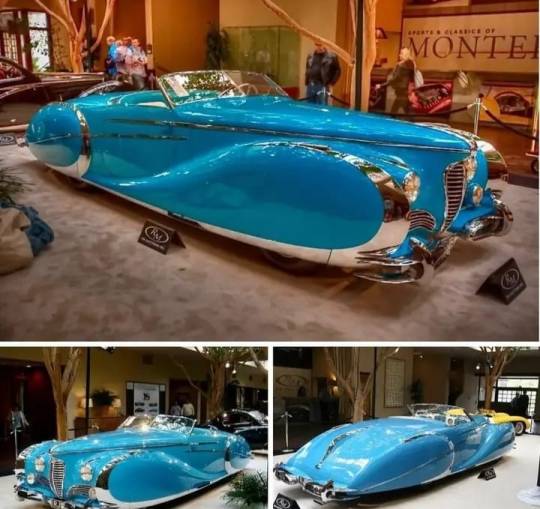
1949 Delahaye 175 S Saoutchik Roadster
Saoutchik was a cabinet maker when he moved to Paris from his home in Ukraine around 1900, but he didn’t take long to establish himself in the fledgling automotive coachbuilding industry and he showed a consistent flair over the next 50 years which puts him among the very elite of automotive designers.
His designs borrowed little from other designers, and along with names such as Figoni et Falaschi, Chapron, Franay and de Letourner et Marchand, Saoutchik was one of the foremost designers of exquisite Art Deco coachwork during the 20s and 30s.
Saoutchik was commissioned to produce the spectacular work-of-art by flamboyant English collector, Sir John Gaul. The design was based on the first post-war Delahaye chassis from a 175 S Roadster (chassis number 815023) producing 165 bhp from an engine much larger than the pre-war Delahayes ran – a 4,455 cc naturally aspirated overhead valve inline six cylinder engine with four-speed electro-mechanically actuated Cotal Preselector gearbox, Dubonnet coil spring front suspension, De Dion rear axle with semi-elliptic springs, and four-wheel hydraulic finned alloy drum brakes. The wheelbase was a whopping 116 inches.
The car was unveiled at the 1949 Paris Auto Show, and was exhibited at all the major European concours events that year, from Paris to Monte Carlo to San Remo, scooping the pool wherever it was exhibited. It won best-in-class in the Pebble Beach Concours d’Elegance in 2006 just a few months after a complete restoration. Just a few months later, the car was honored again, winning People’s Choice at theprestigious Amelia Island Concours d’ Elegance.
Having fulfilled its exhibition duties, it then passed through a succession of other flamboyant owners, including actress Diana Dors.
The final word on this stunning automobile goes to Ian Kelleher, President and Chief Operating Officer, RM Auctions
“Following the financial depression of World War II, there were few collectors with the means, flamboyance and flair to commission a car as exotic as this Saoutchik Roadster. Arguably the most desirable post-war, coachbuilt automobile of all time, it is truly a masterpiece of the coachbuilder’s art. Eye-catching and exotic, it is wonderful to drive and combines superlative styling on a chassis of competition quality.”
Courtesy of RM Auctions
94 notes
·
View notes
Text
My visit to the NASCAR Hall of Fame (Charlotte, NC - JUN 29 2024)

Every year for a few years now, I try to do an Independence Day post where I walk around a few cemeteries and snap some cool photos. But this is an election year, and I'm concerned that I'm going to have to soft-block some political zealot high on their own farts that will leave intellectual gems in the comments like 'Drumpf IZ Hitler!' or 'down with left-cucks in 24!'. So instead, I'm going to share some pictures that I took at the NASCAR Hall of Fame in Charlotte, and you can leave all the unrelated jabbering political frivolity that you'd like in the comments section.

For the record, I'm not into NASCAR at all. I haven't watched a full single race in my lifetime, and I tend to associate it with rednecks driving in circles. Which, to my chagrin, I was dead wrong in my interpretation on. Well, except for the redneck part. There's a hell of a lot more to these beautiful cars than I thought. My visit to this specialized museum was a delicate mix of history, art and science lessons!

The first thing I learned is that although these cars look fully assembled from the outside, they have nearly all the standard parts taken out (the radio, the average driver wheel, the headlights, etc.) and the bodies are composed of a flat sheet of durable metal. These days the car panels, which are composite materials like plastic coated with fibreglass, are then painted over to make a colorful, and often very corporate piece of art that is ready to drive at breakneck speeds. This all makes the modified car as light and agile as possible on the speedway.

In the U.S. south, where I reside these days, stock car racing's roots took hold from prohibition. Stock car racing wasn't just about competition; it was about taking your very fast car and running moonshine and illegally imported booze to different regions around Appalachia. Getting away from highway patrol meant stripping your car of excessive weight and parts, allowing for maximum maneuverability around hairpin turns and extreme acceleration up and down steep hills… all while a 1000-pound barrel of booze was strapped down in the back seat.

This is a picture I snapped inside the Hall of Honor, and that man is Richard 'the King' Petty. As a non-NASCAR fan, his face is the face I most associate with NASCAR, as his signature moustache, glasses and hat stand out to me as a truly memorable and iconic driver. But it’s not just the driver that participates. In NASCAR, your team is composed of a chief, who spots opportunities from television monitors and signals the driver through radio to execute specific moves to win the race, all while managing the rest of the team.

The pit crew consists of mechanics, a jackman (runs around the car with a heavy jack to raise the automobile during a maintenance pit stop), a cut-off valve attendant for refuelling, and a driver attendant who helps the driver get in and out of the car. It doesn't just take an individual driver, but a full team to assist the driver in winning the race. Drivers have suffered concussions, bone fractures, severe burns, whiplash, traumatic bodily injuries and death. Talk about bleeding for your craft!

And now for some art! Pictured above is a full-scale clay model of a Next Gen Ford Mustang. These days, clay models of racing cars are developed from digital designs and used to capture approvals from companies to lay down a final design for a race-worthy automobile. Once you pack a V-8 engine into one of these babies and recreate it out of a steel tube frame, you've got a vehicle that can reach speeds above 200 miles per hour.

Here's my pops, Dave, who I took to this museum as a birthday present. He's a NASCAR freak, and this little excursion to the Hall of Fame actually made him cry for a beat as he recalled decades worth of memories of racers, historic moments, and images of historic back-to-back victories for drivers and their teams.

Every car has the potential to be a race car. It just takes some weight-loss surgery or a good initial design, some driver safety features, and a colorful skin to make the whole thing faster, more agile, and more appealing to the eye. I have to say I never expected to absorb so much from the NASCAR HoF. I was grateful for my visit and wanted to share a portion of what I learned to Tumblr as a fun little sidebar.

I hope you enjoyed this post. And rest assured, you will never see another NASCAR post on my page ever again… y'know, unless it’s a meme or something!
Happy 4th,
th3-0bjectivist (Luke)
[ADDENDUM (07/05/2024): Tumblr ryanthedemiboy pointed out to me in the comments that the third paragraph in this post probably needed some modifications regarding the actual description of the panels, which I originally and ignorantly described as an ‘outer metal hull’. While this might have been the case with older NASCAR vehicles, in modern times the panels are at best ‘metal-skinned’, if that, and manufactured from carbon fibre. Also, older NASCAR vehicles were painted and repainted, but ever since the early 2000’s these vehicles are simply wrapped in a vinyl skin. Thank you for your insight ryanthedemiboy, I will ‘stay in my lane’ so to speak in the future and give these topics, that are alien to me, the research they deserve before I post!]
#NASCAR#nascar hall of fame#stock auto car racing#motorsports#art#engineering#science#history#charlotte north carolina#charlotte#north carolina#rum-running#moonshine#cars#race cars#auto racing#car racing#Richard Petty#pit crew#photoset#original photography#photos#my photgraphy#happy 4th of july
50 notes
·
View notes
Photo

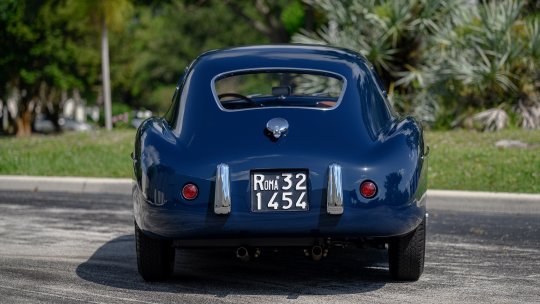

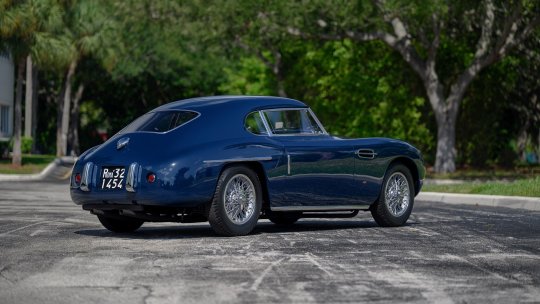


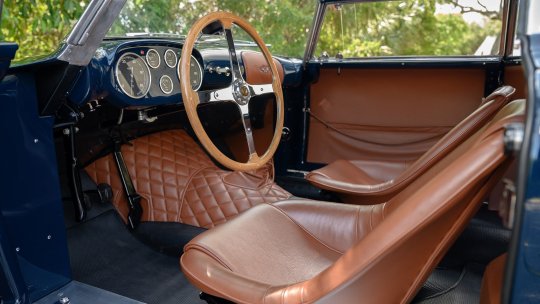
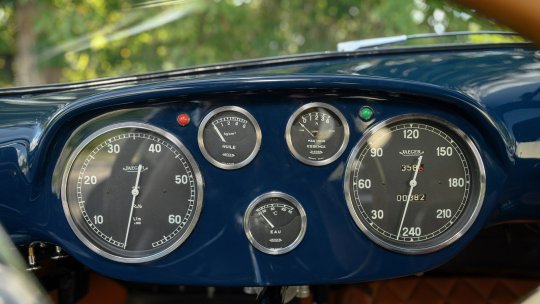
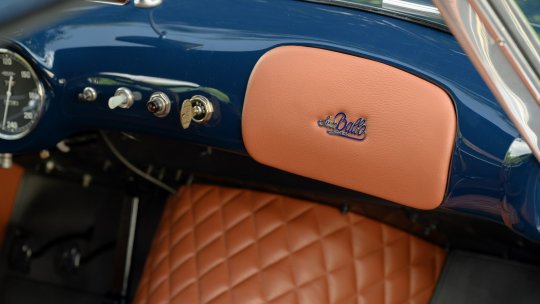
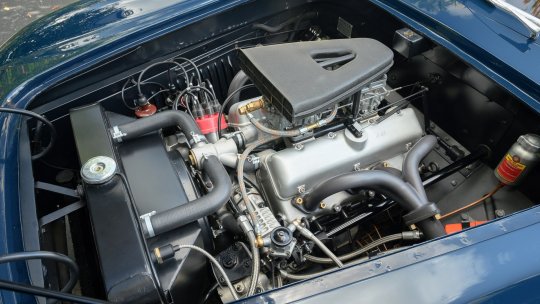
Siata 208 CS ( 1 of 6).
Societá Italiana Auto Trasformazioni Accessori (SIATA) created a marvelous assortment of machinery in its 45-year history under the guidance of the Ambrosini family. Founded by Giorgio Ambrosini in 1926, Siata specialized in performance modifications for Fiats, creating the overhead-valve conversions, multi-speed gearboxes, superchargers, and multi-carb intakes that competitive Italians wanted for their diminutive cars. The Italian auto giant conspicuously ignored—with few exceptions—the high-performance market as the Agnellis concentrated their empire around sensible, reliable, and mass-produced cars of small proportions.Siata received substantial financial assistance from Fiat following the Second World War, and by 1949 they were producing small automobiles which wore custom, house-labeled coachwork. Firmly grafted to Fiat and its engineering, Siata took a giant leap forward with the arrival of Rudolf Hruska in 1950. Hruska had worked in Porsche’s design office before the war and later collaborated with Carlo Abarth on Piero Dusio’s Cisitalia Grand Prix project. Fiat itself plotted its re-entry to the top ranks of Italian performance automobiles in 1950 with the introduction of their two-liter V-8 (dubbed "Otto Vu"), whose development was entrusted to Siata and executed in total secrecy by Hruska’s team.
The unusual oversquare, 70-degree V-8 engine featured all-aluminum castings with wedge-shaped combustion chambers. Induction was through a pair of dual-throat, downdraft Weber carburetors. With its high-revving short-stroke design and 8.5:1 compression ratio, prodigious power was channeled through a four-speed manual gearbox. Hruska planted the engine into a tubular chassis, and this became the basis of Fiat’s 8V.
Debuting at the 1952 Geneva Salon, the 8V caused an absolute sensation perhaps best equated to a meltdown of Italy’s motoring press. For many, the Siata-developed, Fiat-badged supercar defied belief. In particular, the advanced chassis featured a fully independent suspension with coil springs and telescopic shock absorbers at all four corners and was a marvelously sophisticated platform for its time, with supple and predictable handling that amazed drivers accustomed to the rigidly sprung, “flex-framed,” live-axle sports cars of the time.
Approximately 200 Tipo 104 engines were made to supply the 114 8V examples which Fiat ultimately produced. Eighty-five or so surplus engines were thusly returned to Siata, which seized the opportunity to supply them with additional house-made upgrades and implant them into the very chassis from which the earth-shattering Otto Vu had been developed.
The resulting Siata 208 CS was available as an attractive barchetta-like Spider or streamlined berlinetta, which Siata commissioned from a small pool of local coachbuilders including Bertone, Vignale, and Stabilimenti Farina. It is said that Siata openly encouraged the carryover of major styling details which these same companies were providing to Ferrari during the same period.
Perhaps the shapeliest design ever rendered upon the 208 CS, however, was executed by Balbo of Turin. Just nine berlinettas were made, of which only six examples are known to remain extant.
255 notes
·
View notes
Text

On September 17th 1854 David Dunbar Buick was born at 26 Green Street, Arbroath.
You might recognise the name Buick, and yes he is the man behind the famous car manufacturer. The iconic brand Buick motors have the distinction of being the oldest American brand of what the yanks call automobiles, but Scotland has the honour of being home to its founder.
Like the founding titans of American industry before him, David Buick travelled to America with his family as an infant. After leaving school, he took work manufacturing plumbing equipment, but before long he was showing an aptitude for innovation, including an early lawn sprinkler and a cost-effective means for enamelling cast iron bathtubs.
It was in the 1890s when Buick began showing interest in the motoring world. He had a particular interest in combustion engines – so much so that he all-but-ignored the plumbing business, ending with the eventual dissolving of the company. In 1899, the Scot set up Buick Auto-Vim and Power Company in Detroit, Michigan, selling combustion engines in the hope of revolutionising agriculture.
Over the next three years, he set his sights on producing a complete vehicle, draining his resources while generating no return and the finished car, created with chief engineer Walter Marr. He was out of money and a single car to show for his work. Despite the immeasurable odds being stacked against him, he founded Buick Motor Company in early 1902 and immediately set to work developing a revolutionary ‘valve-in-head’ overhead valve engine.
Today’s overhead cam engines are all generally derived from David Dunbar Buick’s innovative designs. By 1906, Buick’s frivolity had caught up with him. He was awarded a severance package from the company he had helped build and left with only one share in the firm. Buick Motor Company’s president, William C. Durrant – former General Manager and Buick’s chief investor – purchased his share for $100,000, equal to $2.7million today.
For those left in any doubt about Buick’s significant role in the history of motoring, his life’s work would later become the foundation on which General Motors was established. The Scot unsuccessfully revisited the automotive industry in 1921 with Lorraine Motors, but was almost completely broke by 1928 and in 1929 he died from cancer, aged 74. David Dunbar Buick was ushered into the Automotive Hall of Fame in 1974 for his contribution to the fledgling industry in the late 19th Century.
At the turn of the millennium, over 35,000,000 motor cars had been built in his name, which will never be lost to history.
The statue in the pic was unveiled in Michigan, another was planned for Arbroath as far back as 2018, but as yet so far it has not been erected.
22 notes
·
View notes
Text


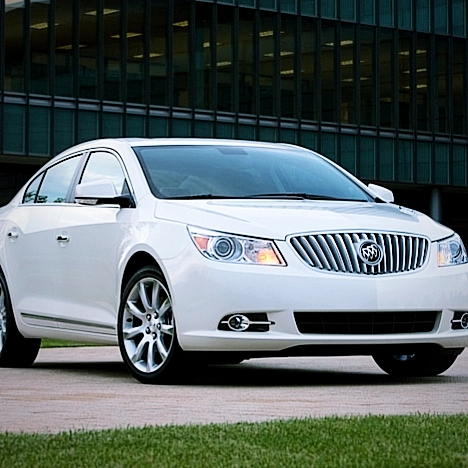
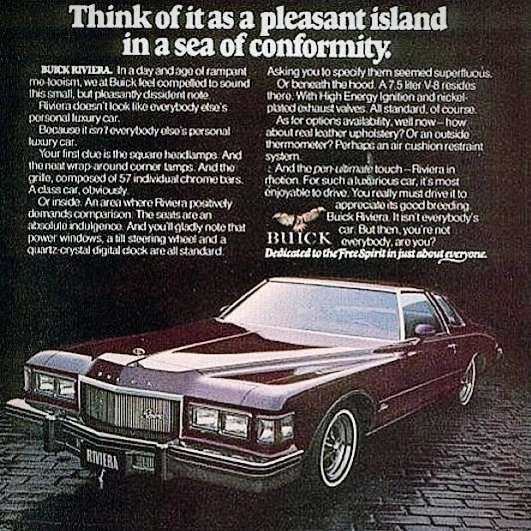
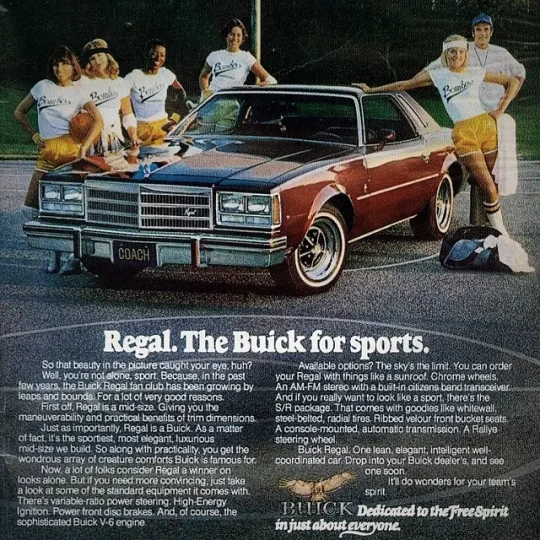

🇺🇸 Founded in 1899 by David Dunbar Buick, Buick Motor Company quickly became a pioneer in the American automotive industry. Starting in Detroit, Michigan, and later moving to Flint, Buick became one of the oldest and most respected American automobile brands, known for luxury, performance, and innovation.
💡 Buick set itself apart early on by introducing the revolutionary overhead valve engine. This design provided greater power and efficiency, making Buick one of the most reliable brands of its time. By 1908, Buick had become the best-selling car brand in the United States, a status that helped solidify its place in automotive history.
🏢 In 1908, Buick became the cornerstone for General Motors (GM), founded by William C. Durant. Buick's success helped finance GM’s expansion into other brands like Cadillac and Chevrolet.
🎖 Throughout the 1930s and 40s, Buick grew its reputation for luxury and elegance. Iconic models like the Buick Roadmaster and Buick Super became symbols of American style and quality, providing the luxury of a Cadillac at a more accessible price. These cars weren’t just vehicles—they were statements on the road.
🔥 In the 1950s, Buick introduced some of its most memorable models. With distinctive portholes on the sides and innovative designs like the Buick Skylark, the brand embodied the optimism and progress of post-war America. The introduction of the famous Nailhead V8 engine made Buick a powerhouse in performance, especially admired by car enthusiasts and drag racers.
⚡ From the classic Rivieras of the 60s to today’s advanced SUVs, Buick has continually evolved to meet modern demands while staying true to its heritage of comfort and reliability. Today, Buick combines innovation with a modern sense of style. With over a century of engineering and style under its belt, Buick stands as one of the longest-surviving American brands.
#brits and yanks on wheels#transatlantic torque#cars#old cars#retro cars#vehicle#brands#companies#automobile#american cars#buick#buick motor company#general motors#gm#detroit#michigan#flint#david buick#buick lesabre#buick regal#buick riviera#park avenue#buick skylark#buick electra#sedan#luxury cars#luxury car#luxury#made in america#american auto
11 notes
·
View notes
Text

1929 Duesenberg Model J Convertible Victoria Coachwork by Rollston
Duesenberg Model J and Model SJ
Fred Duesenberg was a master of creating engines and was a creative designer. He had a talent for conceiving new ideas and ways of doing things. The engines he constructed were beautiful, mechanically sound, and advanced. E.L. Cord gave him one task: 'Create the best car in the world.' This was a very tall order and came at a very difficult time in history. The onset of the Great Depression and the Stock Market crash was just around the corner. Competition in the luxury car segment was fierce and involved all facets of the automobile. The cylinder wars that began in the 1920s and continued into the 1930s had marque's trying to outdo each other on the bases of its engine output, the number of cylinders, and the speed of their ultra-luxury automobiles. Styling continued to be very important and often outsourced to the greatest designers and coachbuilders of the time. Maruqee's such as Cadillac, Packard, Rolls-Royce, Hispano-Suiza, Isotta Fraschini, Bugatti, and others were all trying to out-do each other and continue in business during this difficult point in history.
The Duesenberg Model J was first unveiled to the public at the New York Car Show on December 1st of 1928. Only the chassis and engine were shown and it still impressed enough to make front-page news. The wheelbase was 142-inches making it nearly 12 feet. The chassis had a six cross-members made it very sturdy and able to accommodate the heaviest of bodies. The engine had dual overhead camshafts and eight-cylinders with four valves per cylinder. It displaced 420 cubic-inches and produced an impressive 265 horsepower in un-supercharged form. The engine had been designed by Fred Duesenberg and constructed by the Lycoming Company, which had been recently acquired by E.L. Cord. There was a brilliant lubrication system which automatically lubricated various mechanical components after sixty to eighty miles. Two lights mounted on the dashboard indicated when the lubrication process was transpiring. After 750 miles, lights mounted on the dashboard would light-up indicating the oil required changing. After 1500 miles, the lights would illuminate indicating the battery should be inspected. The top speed was 119 mph and 94 mph in second gear. With the use of a supercharger, the top speed increased even further, to nearly 140 mph. Zero-to-sixty took around eight seconds with 100 mph being achieved in seventeen seconds.
2 notes
·
View notes
Photo
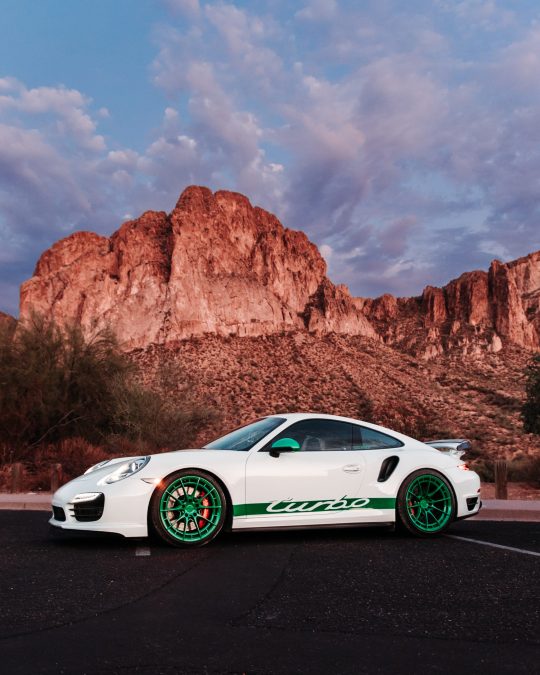
New Post has been published on https://www.vividracing.com/blog/tasteful-porsche-991-1-turbo-build-pays-tribute-to-1973-carrera-rs/
Tasteful Porsche 991.1 Turbo Build Pays Tribute To 1973 Carrera RS
If you are looking to make your 2014 Porsche 911 991.1 Turbo stand out from the crowd, then you are in the right place! Whether you’re a professional racer, a weekend enthusiast, or just someone who appreciates a good car, Vivid Racing knows all the parts and accessories you need to take your fine German automobile to the next level.
Recently, we’ve elevated this Porsche to new heights by integrating some of our top-notch parts. The result? An incredible transformation that makes this 991 Turbo truly stand out. From performance upgrades to luxurious touches, our Porsche 911 is what we find to be the perfect balance between all the adventure capabilities while maintaining its reliable daily driving duties.
Our Goal for this Porsche 911 991.1 Turbo
– Enhance driving performance and add character – Unlock even more of its potential with basic bolt-ons
To pay tribute to the classic Carrera RS, the aim was to incorporate elements of its livery. This involved making the 991.1 platform even more appealing by adding OEM+ upgrades. The exterior was transformed from its original white color to a vibrant green reminiscent of the Carrera RS, creating a visually striking and creatively customized appearance for this 911.
ARMYTRIX Valvetronic Exhaust System
We started off our upgrades with the VR Performance Valvetronic Exhaust System for the Porsche 991.1 Turbo. This exhaust system is designed to provide maximum performance, sound quality, and durability. With its valvetronic technology, you can control the sound of your engine from inside the cabin with a simple switch – giving you complete control over how loud or quiet your ride is at any given time! The exhaust notes from the ARMYTRIX system are monstrous. Not only does this exhaust system look and sound great, but it also increases horsepower and torque while reducing back pressure in order to maximize efficiency in your engine.
Exhaust Benefits
– Headers and intake open up airflow – Reduces backpressure in turbo platforms – Provides horsepower and torque gains – Improves exhaust sound
VRP High Flow Headers
These new VR Performance tubular headers for the Porsche 991 Turbo or Turbo S really show off the performance you can get out of this engine. The design of the headers are a 3 into 1 style that the twin turbo REALLY benefits from. Unlike the 996 and 997 Turbo, the 991 headers are very restrictive and the clam shell design prohibits the turbos from spooling up quickly.
Headers Benefits
– Increases airflow – Reduces backpressure – Increases Horsepower & Torque – Improves exhaust sound
VR Tuned ECU Flash
To really get the most out of our modifications we decided to get an ECU flash from VR Tuned for this Porsche 991.1 Turbo. This optimizes engine performance, enhancing horsepower and torque while maintaining fuel efficiency. We opted the tune with:
Vmax Off – This is an increase or reduction of the maximum speed limit.
Race Exhaust – This option is for those running full race exhaust systems.
Pops & Bangs (burble tune) – This is the result of an ignition delay which creates an exhaust detonation when the throttle pedal is released.
ECU Flash Benefits
– Eliminates CEL codes caused by headers or high-flow catalytic converters installation – Properly optimizes and adjusts fuel and ignition maps for the new modifications – Provides an additional 100 wheel horsepower over stock
VRP Upgraded Diverter Valve Pair
The factory diverter valves are prone to leaking pressure under increased boost. To help keep the boost pressure constant all the way to redline, upgrading the stock diverter valve to the VR Racing Diverter Valve Kit was necessary. These valves are CNC machined 6061 aluminum which have been precision engineered to fit with the stock or aftermarket boost hoses. The internal construction of the valve uses a machined piston with proper o-rings to ensure a smooth motion that is air tight to prevent any boost leaks. The spring has been engineered to hold moderate to aggressive boost increases on your turbo car.
Diverter Valve Benefits
– Helps eliminate back pressure – Recirculates boost pressure for better throttle response and less turbo lag
H&R Sport Springs
H&R has introduced their Sport Spring lowering kit tailored for the Porsche 911 Turbo | Turbo S. These Sport Springs lower the vehicle’s center of gravity, minimizing body roll and improving its handling capabilities. This also helps with a more aggressive stance, all while retaining the factory suspension components. All H&R springs are crafted from a special (hf) 54SiCr6 spring steel to ensure premium quality and performance.
Sport Spring Benefits
– Maintaines all factory Porsche suspension components for reliability – Lowers the center of gravity for better handling – Gives the car a lower, sportier look while keeping the factory handling
VRP Cold Air Intake Kit
Unlocking maxium power starts with airflow, and the Porsche 991 Turbo knows it well. Upgrading the stock intake system in this beast can be quite the challenge due to its redesigned engine bay. But look no further! Our kit is here to revolutionize the game. We’ve retained the factory intake snorkel, channeling airflow directly to our twin cone air filters. These filters aren’t just any—they feature a high-flow filtration design to stop more bad particles while keeping an extremely high efficiency. Each filter comes with an intake tube that is powdercoated wrinkle black made from 6061 heat treated aluminum and TIG welded.
The VRP cold air intake kit is a game-changer, giving the Turbo quick throttle response, almost like driving in perpetual sport mode all the time. Need proof? With this kit, we were able to pick up 0.1sec quicker 0-60mph. Dyno tests will reveal a gain of about 15ft/lbs of torque at the peak while horsepower gain is 10awhp at peak RPM.
Cold Air Intake Benefits
– Increases air flow – Improves sound and appearance – Increases Horsepower and Torque
VR Forged D03-R Wheel Set
No matter what kind of car you have, nothing makes a statement quite like some tasteful wheels! We chose the VR Forged D03-R Wheels powedercoated in signal green. This touch pays homage to classic Porsche Carrera RS livery. For this build, a classic 10-spoke with an outer ring design gives it that racing sporty look while still maintaining an air of sophistication and elegance thanks to their unique design. It’s definitely an upgrade that can’t be ignored! Plus they come in 20 x 9 +45 front & 20 x 12 +45 rear sizes so they fit perfectly on the 991.1 Turbo without any issues whatsoever.
Forged Wheel Benefits – Improve performance and aesthetics – Provides a “Euro motorsports flare” compared to previous 5-spoke wheels – Increases strength and provides weight savings over factory wheels
VR Aero Carbon Fiber Wing Lip Spoiler
The Porsche 991 Turbo and Turbo S are incredibly designed vehicles in performance, handling, and aerodynamics. But with all 911 body styles, there is one thing that really makes the iconic shape stand out over stock vehicles. That is, of course, the addition of a more aggressive rear spoiler. For years people have been upgrading the rear ends to feature a GT2 or GT3 style rear spoilers. With the 991 Turbo, the factory hydraulic rear spoiler and front spoiler work hand and hand to provide incredible aerodynamic ability. At 300kph, the 991 Turbo can produce 132kg of downforce, allowing it to lap the Nordschleife two seconds faster than in the normal mode. To keep these incredible stats but add extra styling, we added one final touch – VR Aero Carbon Fiber Wing Lip Spoiler for a little extra pizzazz!
This is a simple add on piece that installs in less than 30 minutes. It allows it to fit snuggly on the stock spoiler curves without drilling or cutting into anything. It wraps around the front and rear of the factory wing blade to lock in place. The lightweight carbon fiber piece is styled to match other VR Aero carbon fiber parts.
Wing Lip Spoiler Features
– Retains the factory function in the up or down position – Requires no special tools to install – 2×2 Carbon weave Carbon Fiber – Gloss coat with 3K UV resistant finish – Fits over stock ducts for easy install – Perfect fitment
VR Aero Carbon Fiber Side Air Ducts
For a touch of sporty elegance, we installed the VR Aero Carbon Fiber Side Air Ducts. These lightweight carbon fiber pieces are not only styled to match other VR Aero carbon fiber parts but also adds a unique aesthetic appeal to the 991 Turbo. These air vents provide additional cooling and lend a bold and aggressive look to the vehicle.
Side Air Duct Features
– Requires no special tools to install – 2×2 Carbon weave Carbon Fiber – Gloss coat with 3K UV resistant finish – Fits over stock ducts for easy install – Perfect fitment
VR Aero Carbon Fiber Rear Diffuser
To take the exterior to the next level, we’ve added the VR Aero carbon fiber diffuser, and let’s just say, it’s a game-changer for that stylish, aggressive vibe you crave! Our goal was to find best performing upgrades and develop them at affordable price. This rear diffuser isn’t just an addition; it’s a statement. Crafted to seamlessly attach to the OEM rear bumper, it’s designed to flow the lines of the rear skirt. This carbon fiber piece not only adds flair but amplifies the rear end of the 991, making heads turn wherever you go.
Rear Diffuser Features
– Requires no special tools to install – 2×2 Carbon weave Carbon Fiber – Gloss coat with 3K UV resistant finish – Fits over stock ducts for easy install – Perfect fitment
VRP Porsche PDK Cup Style Shifter Stick
Last but not least, we’ve added the VR Performance Cup Shifter for more fun and engaging shifting experience. This shifter was designed to give PDK owners a whole new experience in driving their car. Mimicked after the factory cup car style shift knob and assembly, this makes banging through the gears a lot more fun. We also wanted to maintain OEM+ style for this build as Porsche interiors already have great features from the factory. The height of the shifter is increased about 3 inches over the stock PDK lever. This puts the Cup Shifter at a great position in reference to the steering wheel. You now can have quick hand placement from the steering wheel to shift knob to smash through the gears like a pro!
Sifter Features
– Added longer shifter knob with button actuator – Gives sequential style shifting feel – Gives interior OEM+ look – CNC machined from 6061 aluminum – Cup car style shift knob – Carbon fiber center tube – Easy installation
At Vivid Racing, we offer a range of parts and accessories perfect for enhancing your Porsche 911 991.1 Turbo, catering to everyone from professional racers to weekend enthusiasts or anyone who simply loves quality cars. Our selection spans performance upgrades to luxurious additions, ensuring your Porsche strikes the ideal balance between adventure-ready capabilities and reliable daily driving.
youtube
1 note
·
View note
Text
https://blwenginevalves.com/manganese-phosphating/
Manganese Phosphating Services in Delhi NCR
Introduction
To cater to the varied demands of our esteemed clients, BLW Engine Valves offers top-quality Manganese Phosphating services in Delhi NCR. This specialized process is performed under the supervision of our experienced professionals, who strictly adhere to industry standards to ensure the highest level of quality and reliability. Using advanced tools and technology, we guarantee that every part is treated with precision, enhancing its performance and longevity.
#bajaj automobile spare parts#bajaj auto spare parts#bajaj auto parts#bajaj parts#engine valve#valve guides#bajaj genuine parts#bajaj 3 wheeler#tvs original spare parts#automotive spare parts manufacturer
0 notes
Text


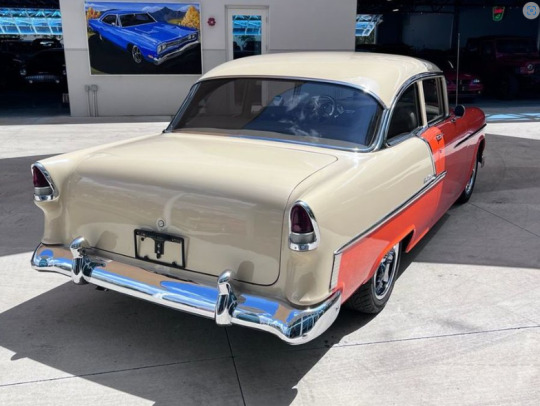

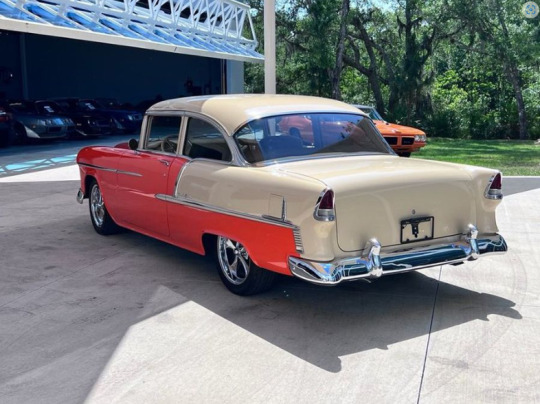
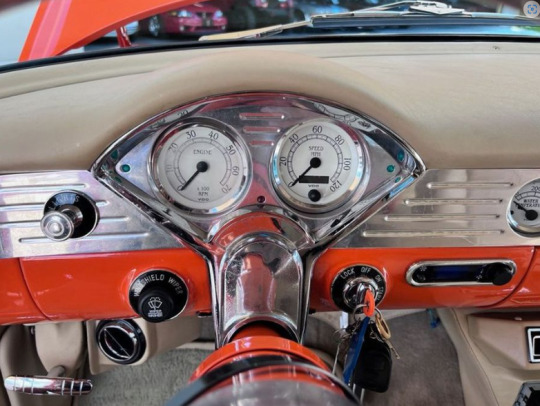



1955 Chevrolet Bel Air Custom
Why This Car Is Special
The 1955 Chevrolet (sometimes referred to as '55 Chevy) is an automobile that was made by Chevrolet in 1955. It is considered a huge turning point for the manufacturer and was a major success.
Fast forward to now and you will see this 1955 Chevrolet 150 Resto-Mod we have at Skyway Classics has a semi-truck load of performance and comfort items added to its gleaming orange and tan exterior.
Features
1955 Chevrolet Bel Air Custom
Restored at Custom Classics
355 cubic inch modified small block Chevrolet engine
Polished aluminum intake
Performance carb with the electric choke
Chrome open element air cleaner assembly
Aluminum finned valve covers with red script Chevrolet
Performance fuel plumbing
Modified electronics and distributor
Serpentine belt drive system with billet aluminum pulleys
Power steering and disc power brakes
Vintage Air
Tube headers
3-inch dual exhaust with Flowmaster mufflers
700 R4 automatic transmission with overdrive
Engine and frame both painted and detailed
Tan custom interior
Handsome bucket seat like but bench-seats
Matching rear seat and door panels
Leather-wrapped steering wheel
Custom center console with the chrome shifter and orange shifter ball
Billet aluminum dash with VDO gauges
In-dash CD player
Vintage Air with electronic climate control
Seatbelts
Tan carpet and floor mats
Finished trunk with custom fitted partitions, carpet, Bow Tie logo back of the cargo area
Hugger Orange and Tan
Full side windows in place of the original vented pieces
One-piece front and rear bumpers
Staggered-diameter Ridler alloy wheels
Performance tires
Mechanical
You will appreciate the 355 cubic inch modified Chevy small-block V-8 residing under the smoothed hood. A showpiece all on its own, it incorporates a polished aluminum intake, performance carb with the electric choke, chrome open element air cleaner assembly, aluminum finned valve covers with red script Chevrolet on them, performance fuel plumbing, modified electronics and distributor, a serpentine belt drive system with billet aluminum pulleys to drive its power steering, power brakes, alternator and Vintage Air accessory drives, and tube headers feeding 3-inch dual exhaust with Flowmaster mufflers to deliver the kind of throaty rumble guaranteed to attract attention.
A 700 R4 automatic transmission with overdrive and four-wheel disc brakes add even more to the 150's performance capabilities with the engine and frame both painted and detailed.
Interior
The tan custom interior has had its once-minimalist accommodations traded for a handsome bucket seat like but bench-seat interior featuring a matching rear seat and door panels, a leather-wrapped steering wheel, custom center console with the chrome shifter and orange shifter ball, billet aluminum dash with VDO gauges, in-dash CD player, Vintage Air with electronic climate control, seatbelts, and tan carpet and floor mats.
It even has a finished trunk with custom fitted partitions, carpet, and a Bow Tie logo across the back of the cargo area.
Exterior
Our 1955 Chevrolet 150 Sedan is a particularly fine example of craftmanship that has went into this show car.
The first thing you will notice is the paint scheme. Tastefully sprayed in Hugger Orange and Tan with carefully considered details such as full side windows in place of the original vented pieces, one-piece front and rear bumpers contribute to setting the car apart from the pack, and new staggered-diameter Ridler alloy wheels and performance rubber give it just the right stance.
Conclusion
This 1955 Chevy show car we have at Skyway Classics was built by Custom Classics that is a nationally renowned restoration facility for customizing show-winning cars of almost any make and model, from American iron to foreign exotics and vintage rarities.
1955 Chevrolet Bel Air Bradenton, Florida | Hemmings
1955 Chevrolet Bel Air Bradenton, Florida | Hemmings
1955 Chevrolet Bel Air Bradenton, Florida | Hemmings
4 notes
·
View notes
Text
Valve systems play a crucial role in maintaining a vehicle lubrication level
Either as an individual or as a group, having a car in good condition is one of the ways to improve your mobility. With a vehicle, you can be in multiple places every day and attend to different needs. Having a car of your own can be a bit easy. Still, the biggest challenge of having an automobile lies in maintaining and keeping it in good condition.
Since vehicles have different parts, it will be necessary for you to understand each of the make-ups to know how to respond in case any part develops faults. One area you should be mindful of in your vehicle is the valve system seal. These seals play a crucial role in controlling lubrication as the valve stem moves up and down the guide. In this write-up, you will be learning tips on what valve stem seals represent and immediately identifying faults at an early stage under different conditions. Below are some of the precautions you should take as regards your vehicle valve stem seals.Types of valve stem sealsValve stem seals come in two different types, namely defector seal, which is also known as umbrella seals, and positive seals. The defector seals work hand-in-hand with the valve stem, ensuring the lubricant that gets into the valve guide does not exceed the needed amount. Positive seals, on the other hand, help in controlling oil consumption and hydrocarbon emissions. With this feature properly in place, only a slip of oil passes through to lubricate the valve guide.Valve system failure under different conditions:You will notice some changes when the valve guide begins to wear due to age or excessive oil presence in the oil valve guide. Below is a list of unique symptoms you should be on the lookout for on valve system failure. Excessive smoke When the valve seal condition has become damaged, the blue-white exhaust colors will take a different look after acceleration and engine start-up. At the same time, the smoke generated by the exhaust tends to disappear after the engine has worked for a while or under a hot weather condition. Excessive oil consumption Under normal circumstances, if the vehicle engine, rings, and valve guides are in good condition, there is little to no loss of oil.Wholesale Solenoid Valve Factory. But the reverse is the case if the valves become bad. At this point, vehicle oil consumption becomes excessive. Lack of acceleration powerWhen you notice your vehicle acceleration power seems to be dropping, that might be a clear indicator of a bad valve seal. However, this submission is not conclusive. You can carry out a compression test to validate whether the fault is from your valve seal or other parts. If the compression level is high, it indicates a valve problem. But if otherwise, it will mean a ring problem.
Conclusion Valve systems play a crucial role in maintaining a vehicle lubrication level as well as oil consumption level. To keep your vehicle in good condition, you must not overlook any slight fault at the inception stage, particularly in the valve stem system. Thankfully, this article has discussed some essential information you should know to help you manage your valve stem system and vehicle lubrication processes better.
2 notes
·
View notes
Text



Launched a century ago, the Bugatti Type 35 didn’t just make a single impact—it revolutionized the racing world with its innovative design and engineering. The car became legendary not only for its initial capabilities when it debuted in 1924 but also for the continuous improvements Bugatti implemented throughout its production. Ettore Bugatti was one of the first automobile manufacturers to grasp the marketing potential of winning races on Europe’s renowned circuits and road tracks, which brought considerable publicity to his brand. Confident as he was in the capabilities of his new car, even Bugatti could not have predicted that the Type 35 would become the most successful race car in history, achieving 2,500 victories during its active racing career.
The first Type 35, released in 1924, was equipped with a 1,991cc eight-cylinder engine, delivering 90 PS in race trim. By early 1926, Bugatti had increased the engine size to 2,262cc for the Type 35T, named after the famous Targa Florio road race in Italy, which it won, with two smaller-engined Type 35s finishing close behind. Despite this success, Ettore Bugatti realized that to stay ahead of the competition, he needed more than just increased engine displacement. He knew that the future of performance lay in forced induction, even though he was initially not a fan of superchargers, which were seen as inefficient at the time.
“It’s no secret Ettore Bugatti preferred naturally aspirated engines and was not an early enthusiast of supercharging due to its perceived inefficiency,” says Luigi Galli, Specialist for Heritage and Certification at Bugatti. “However, what’s less well known is that Bugatti was forward-thinking about the potential of forced induction, experimenting with superchargers even before the Type 35 debuted at its first race in Lyon in August 1924. In fact, Bugatti applied for French patent number 576.182 on January 22, 1924, for a ‘Compresseur ou pompe à palettes,’ a rotary vane supercharger design that could provide extra power on demand by forcing pressurized air into the carburetor. If Bugatti was going to use a supercharger, he was determined to innovate in his own way.”
As a result, Ettore Bugatti, alongside the Italian engineer Edmond Moglia, developed a unique three-rotor Roots-type supercharger, differing from the common two-rotor designs of the time. This supercharger was strategically mounted on the engine’s offside, which allowed it to warm up more quickly and improve overall engine cooling—a principle that remains relevant in modern engine design. The Type 35TC, where “TC” stands for Targa Compressor, was introduced in late 1926. It evolved into the Type 35B in 1927, featuring a larger radiator and cowling, known as the ‘Miramas’ design, which enhanced cooling capabilities. This configuration enabled the Type 35B to produce up to 130 PS, achieving speeds over 205 km/h (150 mph).
By late 1930, further refinements led to what many consider the ultimate version of the Type 35B. This final iteration featured a twin-cam, two-valve-per-cylinder engine, a twin fuel filler cap, improved suspension, wheels, brakes, and tires, as well as a lower-mounted supercharger relief valve. Bugatti’s relentless pursuit of perfection extended to optimizing every element of the combustion system, from sculpted pistons and cylinder heads to the use of aviation-grade fuel, which boosted the output to 140 PS.
Today, at Bugatti’s atelier in Molsheim, each Bugatti model is hand-assembled with the same meticulous attention to detail that Ettore Bugatti applied to the Type 35. A century later, Bugatti’s engineers and designers continue to push the boundaries of automotive excellence, upholding a legacy of innovation and performance that began with the groundbreaking Type 35.
13 notes
·
View notes
Text
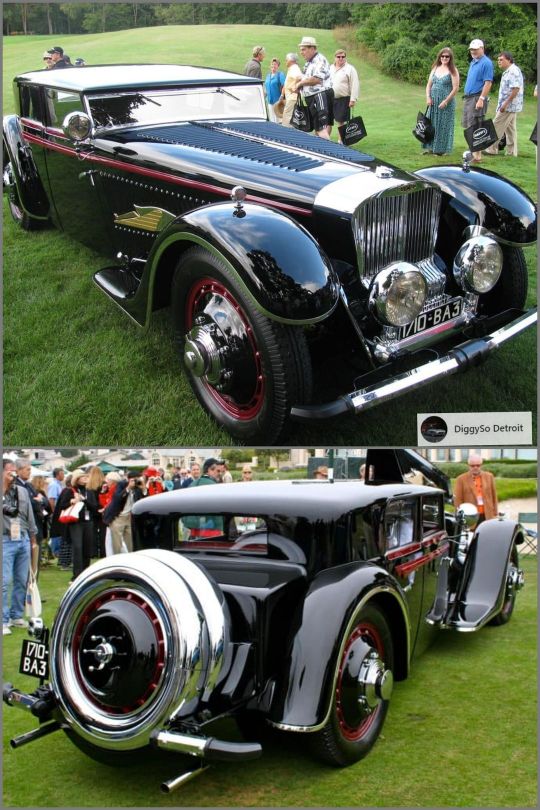
1932 Bucciali TAV 12 "Golden Arrow" by Saoutchik
Paul-Albert Bucciali built only six cars between 1926 and 1932. They were built to display the front-wheel-drive system Bucciali invented. Bucciali received an American patent and licensed his technology to Peerless Motor Car Company of Cleveland, Ohio. Unfortunately for Bucciali, Peerless never used the license.
This Bucciali features a specially designed Voisin V12 sleeve-valve engine with four carburetors. Drive to the front axle is through a four-speed transaxle. The huge wheels, fabricated from steel, have integral brake drums. The coachwork is by the French Carrozzeria Saoutchik. The distinctive stork on each hood side is made from German silver, phosphor bronze, and gold-plated brass. This stork was the insignia of Bucciali's WWII fighter squadron. The original chassis price was an incredible 130,000 Francs, and the coachwork was an additional 85,630 Francs. Only one Bucciali was sold to the public. This is it!
The original owner, George Roure, displayed his Bucciali at the 1932 Paris Auto Show. Subsequently, he sold it to Count de Rivaud, who later mounted the body on a more maneuverable Bugatti chassis. In the 1970s, the body was reunited with what remained of the Bucciali chassis and drivetrain, and after a long, challenging restoration, the Bucciali was returned to its original state. The work was begun in Detroit by the noted collector Raymond Jones. In addition to using many factory blueprints, Paul Albert Bucciali was consulted for special detail as to the colors and design of the interior. The car now appears exactly as displayed at the Paris show in 1932.
Starring at the 1932 Paris Auto Show, the front-wheel drive, twelve-cylinder, sleeve-valve engined Bucciali stunned show-goers. Cloaked in one-off coachwork by Saoutchik, the car received acclaim as the most advanced and modern French automobile.
The Bucciali was sold originally to a Paris banker, who drove it for three years. The coachwork was then removed and fitted to a Type 47 Bugatti chassis. The Bugatti fitted with the Bucciali's coachwork was sold and brought stateside after World War II. The original chassis remained behind in France.
In the 1970s, the Bucciali body was reunited with the original chassis, which was purchased from a French collector. With the assistance of Paul Albert Bucciali, the car was restored to the original, spectacular state that it is today.
73 notes
·
View notes